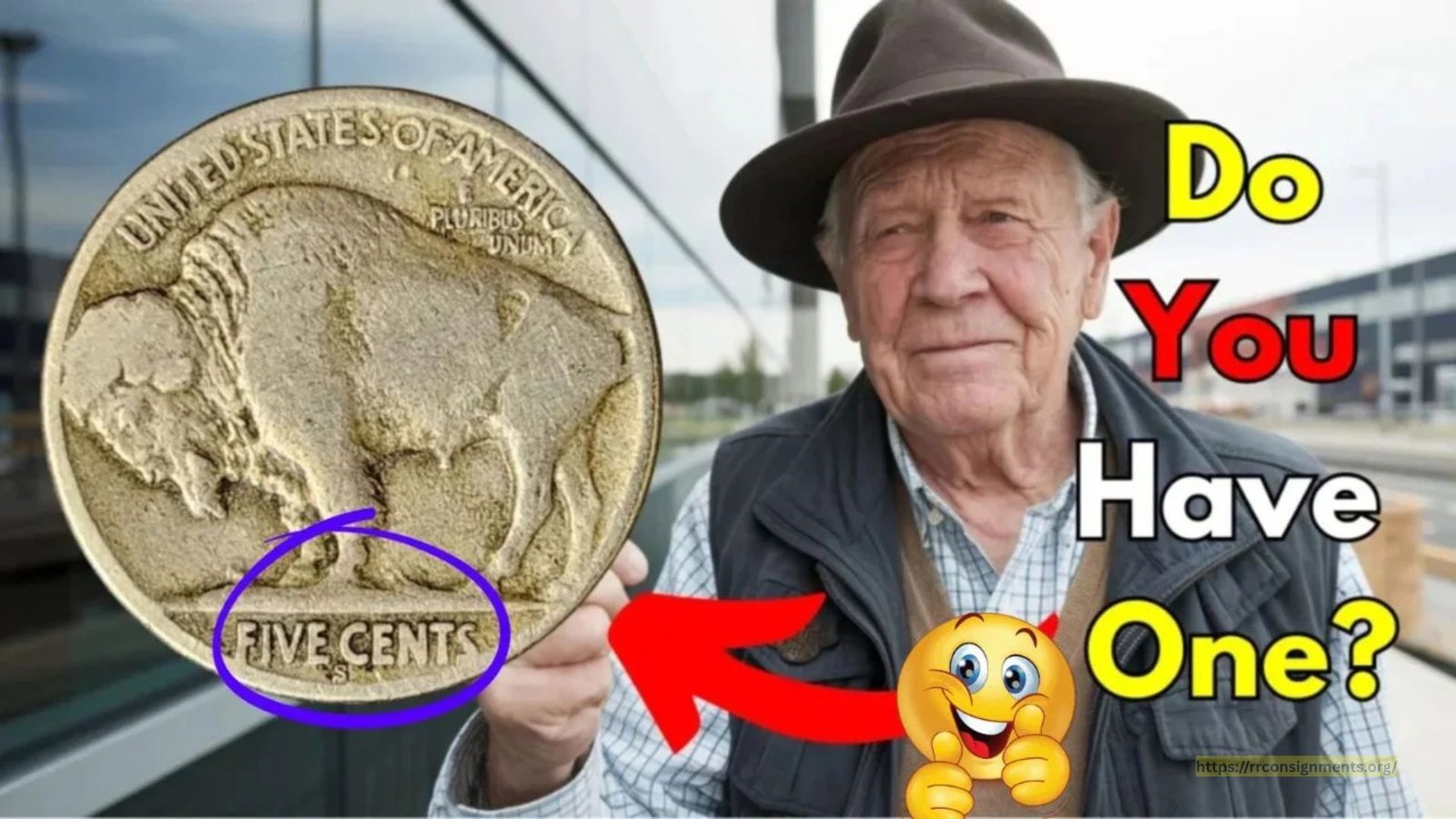The Buffalo Nickel, also known as the Indian Head Nickel, is more than just a coin—it’s a piece of American history that captures the spirit of the Old West. My journey into coin collecting began with a single Buffalo Nickel, sparking a lifelong curiosity about numismatics. In this article, I’ll share how this iconic coin caught my attention, its fascinating history, and why it’s a favorite among collectors. Whether you’re new to coin collecting or a seasoned numismatist, this guide will inspire you to explore the world of Buffalo Nickels.
What Is a Buffalo Nickel?
The Buffalo Nickel is a five-cent coin minted by the United States from 1913 to 1938. Designed by sculptor James Earle Fraser, it features a Native American portrait on the front (obverse) and an American bison on the back (reverse). The coin’s unique design celebrates America’s Western heritage, making it one of the most beloved coins in U.S. history.
Why It Stands Out
Unlike other coins of its time, the Buffalo Nickel broke away from traditional designs like Lady Liberty. Its bold imagery of a Native American and a bison resonated with Americans, symbolizing the country’s frontier roots. The coin’s artistic beauty and historical significance make it a must-have for collectors.
My First Encounter with a Buffalo Nickel
It all started on a quiet afternoon at a local flea market. While browsing a box of old coins, a worn Buffalo Nickel caught my eye. The rugged profile of the Native American and the majestic bison on the back intrigued me. Though the date was barely visible, I felt an instant connection to this small piece of history. That moment sparked a question: what stories could this coin tell?
The Moment of Curiosity
I bought the nickel for just a few cents, not knowing its true value. Back home, I began researching its origins, diving into the world of coin collecting. I learned that the Buffalo Nickel wasn’t just pocket change—it was a symbol of America’s past, designed to honor its Native American heritage and the wild bison that once roamed the plains.
The History Behind the Buffalo Nickel
The Buffalo Nickel was born during a time when the U.S. Mint wanted to refresh American coinage. In the early 1900s, President Theodore Roosevelt pushed for more artistic designs, and the Buffalo Nickel was part of this effort. James Earle Fraser, a talented sculptor, was chosen to create a design that captured the essence of America.
Design and Inspiration
Fraser’s design was inspired by real-life figures. The obverse features a composite portrait of three Native American chiefs, though their exact identities are debated. Some believe Chief John Big Tree of the Seneca Nation was a key influence. The reverse showcases a bison, modeled after Black Diamond, a famous bison from New York’s Central Park Zoo. The coin’s inscriptions, like “LIBERTY” and “UNITED STATES OF AMERICA,” add to its classic appeal.
Production Challenges
When the Buffalo Nickel was first released in 1913, it faced issues. The original design (Type 1) had the words “FIVE CENTS” on a raised mound, which wore out quickly in circulation. The Mint redesigned it later that year (Type 2), flattening the mound to protect the text. Despite these changes, the coin’s high-relief design caused the date and other details to wear off easily, making well-preserved examples rare and valuable today.
Why Buffalo Nickels Are Collectible
Buffalo Nickels are a favorite among collectors for several reasons. Their unique design, historical significance, and rarity make them stand out. Here are some key factors that drive their popularity:
| Factor | Description |
|---|---|
| Artistic Design | The Native American and bison imagery captures America’s Western heritage, appealing to collectors who value aesthetics. |
| Historical Value | Minted from 1913 to 1938, the coin reflects a pivotal era in U.S. history. |
| Rarity | Certain dates, mint marks (like “D” for Denver or “S” for San Francisco), and errors (e.g., 1937-D 3-Legged Buffalo) are extremely rare. |
| Condition | Well-preserved coins with clear dates and details, especially “Full Horn” examples, command high prices. |
| Minting Errors | Errors like the 1918/7-D overdate or 1937-D 3-Legged Buffalo are highly sought after. |
Key Dates and Varieties
Some Buffalo Nickels are worth more due to low mintage or unique errors. Here are a few notable examples:
- 1913-S Type 2: A rare coin with a low mintage, highly prized by collectors.
- 1918/7-D Overdate: A minting error where 1918 was stamped over 1917, with fewer than 200 known to exist.
- 1937-D 3-Legged Buffalo: Caused by over-polishing a die, this error coin is one of the most famous in U.S. numismatics.
The Value of a Buffalo Nickel
The value of a Buffalo Nickel depends on its condition, date, mint mark, and rarity. Common coins in poor condition may be worth just a few cents, while rare varieties in mint condition can fetch thousands or even millions. For example:
- A 1918/7-D overdate sold for $601,000 at auction in 2024.
- A 1913 Liberty Head Buffalo Nickel, one of only five known, sold for $980,000 after being found in loose change.
Tips for Evaluating Your Coin
If you find a Buffalo Nickel, here’s how to assess its value:
- Check the Date: A clear date increases value, as many nickels have worn dates.
- Look for Mint Marks: Check the reverse under “FIVE CENTS” for a “D” or “S.” Philadelphia coins have no mint mark.
- Inspect Condition: Coins with minimal wear, clear details, and a “Full Horn” on the bison are more valuable.
- Avoid Cleaning: Cleaning a coin can damage it and lower its value. Consult a professional for authentication.
My Growing Passion for Coin Collecting
That first Buffalo Nickel opened the door to a new hobby. I started attending coin shows, reading numismatic books, and connecting with other collectors. Each coin I added to my collection told a unique story, from rare minting errors to coins passed down through generations. The thrill of finding a rare date or a well-preserved piece keeps me hooked.
Why You Should Start Collecting
Coin collecting is more than a hobby—it’s a way to connect with history. Buffalo Nickels, with their rich designs and stories, are a great starting point. They’re affordable for beginners, with common coins costing just a few dollars, yet they offer the potential for valuable finds.
Conclusion
The Buffalo Nickel is more than a coin; it’s a gateway to history and a spark for curiosity. My journey began with a single nickel at a flea market, leading me to explore the fascinating world of coin collecting. Whether you’re drawn to its artistic design, historical significance, or potential value, the Buffalo Nickel has something for everyone. Next time you come across loose change, take a closer look—you might just find a treasure that ignites your own passion for numismatics.
FAQs
What is a Buffalo Nickel?
A Buffalo Nickel, also called an Indian Head Nickel, is a U.S. five-cent coin minted from 1913 to 1938. It features a Native American on the front and a bison on the back.
Why do some Buffalo Nickels have no date?
The date on Buffalo Nickels often wore off due to the coin’s high-relief design, especially on the raised portion where the date was placed. Heavy circulation caused the date to fade.
How can I tell if my Buffalo Nickel is valuable?
Check the date, mint mark (“D” for Denver, “S” for San Francisco), and condition. Rare dates like 1913-S Type 2 or errors like the 1937-D 3-Legged Buffalo are highly valuable.
Should I clean my Buffalo Nickel?
No, cleaning a coin can damage its surface and reduce its value. Consult a professional coin dealer or appraiser for proper handling.
Where can I sell my Buffalo Nickel?
You can sell Buffalo Nickels through reputable coin dealers, auction houses, or online platforms like eBay. Always have the coin evaluated by a professional first.











